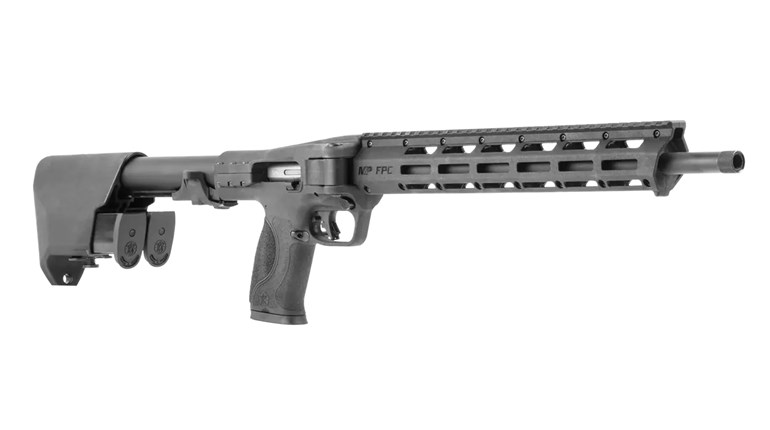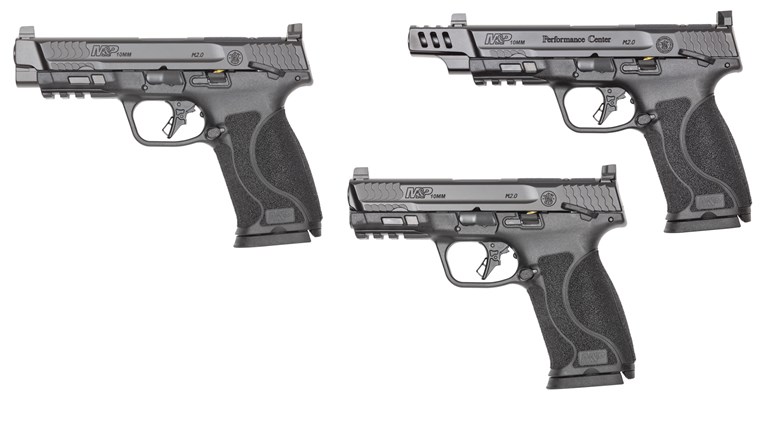
From the shipyards of California to the factories of the Connecticut River Valley—anywhere American industry produced armaments—a relieved sigh rose to the heavens. It was 1945 and a global war ended with a bang. America and its allies had won, largely because we out-produced our enemies. When it ended so abruptly, the gun industry went from full-blast, three-shifts, virtually unlimited production to essentially nothing. In a matter of days, there was no further need for P-51 Mustangs, 16-inch naval guns, jeeps or even Smith & Wesson .38 revolvers. That latter item was the major wartime product of a legendary maker that offered its first gun before the Civil War. Most gunmakers of the post-World War II era came out of the wartime boom at least OK. Smith & Wesson did not.
Financially, the old-line gunmaker was nearly bankrupt. Still owned by the original Wesson family, the company made a controversial move by hiring the services of a Swedish-born engineer who had worked with them on several projects during and just after the war. In 1946, Carl Hellstrom was appointed president of Smith & Wesson. The decade that followed was a time I choose to call the Golden Age of Smith & Wesson. Not only did the firm move to a brand-new plant, but it also came up with a host of new products, most of which did not exist before World War II.
Hellstrom inherited a revolver-making company that had only briefly dallied with semi-automatics. The manufacturer’s elite product was the justly revered .357 Mag., which was built on the large N-frame. In terms of numbers, the smaller K-frame guns in .38 S&W and .38 Spl. outdistanced all others. An even smaller I-frame was just right for smaller .22, .32 and .38 S&W cartridges. These three basic frame sizes—updated and improved—could cover every conceivable revolver need. In the late 1940s, Hellstrom noted the consumer interest in bullseye shooting. He directed a series of upgrades and improvements to the K-frames that made them target-grade, so-called “Masterpiece Target” models. These guns came with Walter Roper-designed, oversize walnut grips and a fine new, adjustable micro-rear sight. Named the K-22, K-32 and K-38, these premium guns were built to weigh exactly the same despite the caliber. There were also shorter-barreled Combat Masterpiece revolvers for police and military service.
It took a little more engineering to fill another critical need in the product line: the concealable defensive revolver. The beautifully made little I-frame guns were exactly that—little guns. Shooters wanted at least .38 Spl. power, but, the I-frame cylinder was too short for that cartridge. Engineers came up with a longer cylinder and a longer frame to handle it and the J-frame was born. Named at a prominent law enforcement convention, the Chief’s Special sold exceptionally well. In this same time period, Smith & Wesson began to develop revolvers with lightweight frames and cylinders. It took little time to add versions of the Chiefs with shrouded hammers (Bodyguards) and even internal hammers (Centennials). These three models are still in production and are the cornerstone of the manufacturer’s line of defensive snubnose revolvers. They are made in different calibers, but .38 Spl. is indeed the most popular.
Since the early 1900s, Smith & Wesson had made revolvers on its large N-frame, which was the foundation for the firm’s superb Registered Magnum of 1935. Originally N-frame revolvers were made for large calibers like the .44 Spl. and .45 ACP. In 1955, the company gave in to consumer demand for a more-powerful revolver in a large chambering. The gun was the .44 Mag., which is still a top-seller. It was so widely used as to become a somewhat iconic model. The age of the magnum revolver was clearly at hand.
Concurrently, Army Ordnance let it be known that it was interested in a new service semi-automatic chambered in 9 mm. As a result, the firm developed a gun to meet that need. When the government decided to drop the program, Smith & Wesson began to sell the pistols commercially. A handsome and effective handgun with several up-to-date features, the new Model 39 (as of ’57) was America’s first DA/SA semi-automatic. The 9 mm service pistol was also the foundation of a highly specialized target semi-automatic chambered for special .38 Spl. wadcutter ammunition. Finally, consider the new .22 LR semi-automatic eventually designated the Model 41. An unabashed bullseye competition gun, this one also had a blue collar, low-priced cousin. A new system of numbering came along in 1957, so the .44 Mag. became the Model 29, the Centennial became the Model 40 and the .38 Spl. semi-automatic was the Model 52.
All of the guns mentioned here were fine examples of their individual types. Literally—in terms of sales—they were the guns to beat. The century-old gunmaker, nearly bankrupt at the beginning, was the leading handgun maker in the world at the end. It’s a real “only in America” story that did not somehow end. Smith & Wesson continues to make a varied line of fine handguns. Still, I fondly recall my police service a decade later. Revolvers were still the king in this period.
Mine? They were K-38s for bullseye and PPC matches, but Centennials and Combat Magnums for fightin’ iron.





































